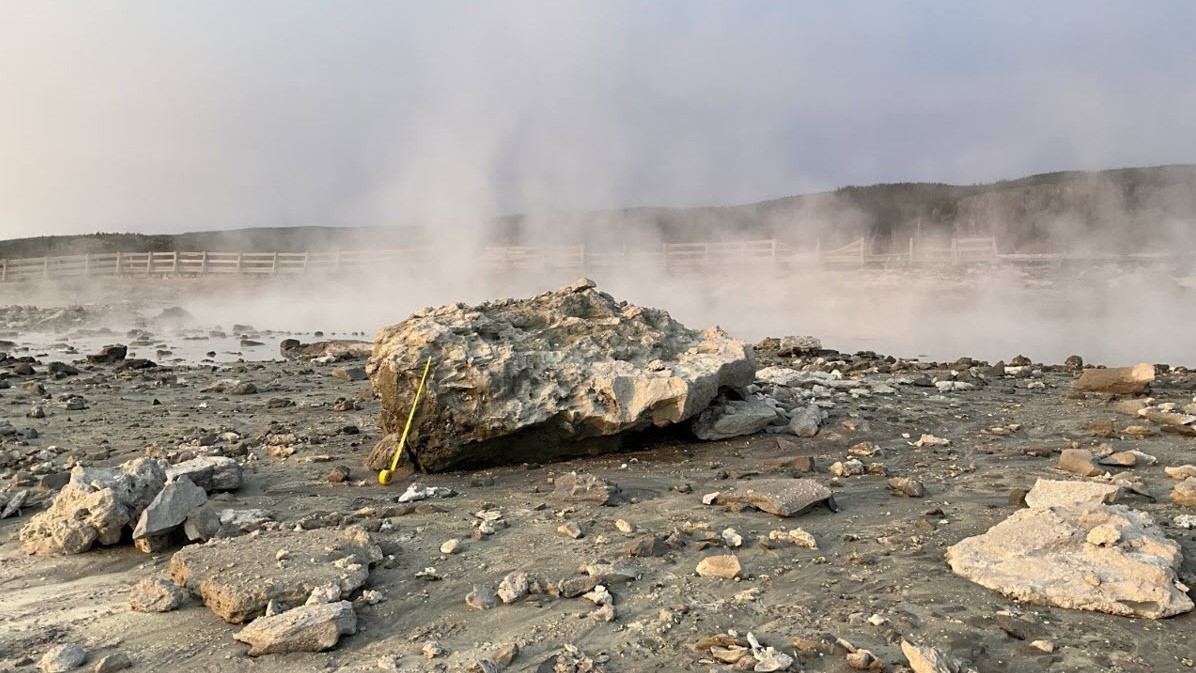
A geyser that erupted last week in Yellowstone National Park fired water and rock debris up to 600 feet (180 meters) into the air, scientists say — six times higher than was initially reported.
Geologists at the Yellowstone Volcano Observatory (YVO) estimated the height of the plume by examining photos posted on social media. They also pinpointed the site and depth of the eruption, which occurred July 23 at Black Diamond Pool in Biscuit Basin, about 2 miles (3.2 kilometers) northwest of the famous Old Faithful geyser.
The eruption was sudden, and "no precursors to the event were detected by monitoring instruments," Michael Poland, a research physicist with the U.S. Geological Survey and scientist-in-charge of the YVO, wrote in the Yellowstone Caldera Chronicles. No one was injured, he wrote, but "the explosion heavily damaged the nearby boardwalk, and the basin remains closed as geologists assess the activity."
Researchers analyzed rock fragments ejected in the eruption and found they were made of glacial materials, sandstones, siltstones and gravels that sit just beneath the surface. The eruption didn't throw out any bedrock buried around 175 feet (50 meters) deep, indicating that the explosion was extremely shallow, Poland wrote. Shallow geyser eruptions are common at Yellowstone, he added.
Related: Yellowstone's geysers at risk of extinction from climate change, tree skeletons reveal
The resulting damage was small compared to what could have been. The explosion largely fired debris toward the Firehole River and away from the nearby boardwalk, where tourists stood at the time of the eruption. The largest rock confirmed to have been coughed out by the eruption weighed several hundred pounds, but it landed far from visitors, Poland wrote.

A clog in the underground hydrothermal system beneath Biscuit Basin likely triggered the eruption, Poland added.
Mineral deposits within the water "pipes" that run below Yellowstone and feed its geysers can block steam and hot water from passing through. Obstructions cause a buildup of pressure that can eventually overcome the strength of surrounding rocks, sparking an explosion.
The eruption likely rerouted the shallow hydrothermal pipe system in Biscuit Basin, and it's unclear what will happen next. By shifting the earth underground, the explosion may have returned the area to a calmer state — or it may have created a new geyser, Poland wrote.
"It is unknown how the thermal features will respond," he wrote, but "the data that geologists are collecting from the explosion debris will provide even more detail on the exact conditions at the time of the event."







